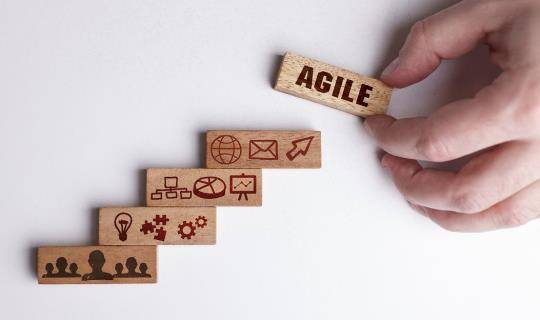Post-pandemic hybrid audit model in questions and answers
By World Courier
Building on the lessons learned from the pandemic and the shift to remote audits, World Courier conducted a webinar "Is the future of auditing hybrid?" to explore the agile future of auditing.
Discover the key insights from this webinar and read the answers to some of the audience's questions:
- What are the most challenging parts when conducting remote audits?
- What preparation may be needed to perform remote audits?
- Which information would be considered important to include in internal Standard Operating Procedures (SOPs) with regards to remote audits?
- Do you have any example of how to best combine remote and on-site into hybrid audits?
- Does "hybrid" mean only a combination of remote and on-site or does it also cover other methods?
- How is the proprietary information in SOP protected when documents are shared using electronic technology?
- Have you heard or contacted with regulators to know if remote audits will be included in guidelines and regulations as accepted methods?
- Have you experienced any different findings during the pandemic than before?
1. What are the most challenging parts when conducting remote audits?
We believe that one of the biggest challenges when conducting audits remotely is maintaining trust between auditor and auditee. In-person processes are presumed to be more informative and a richer form of communication than virtual ones as they allow participants to better assess both verbal and non-verbal interactions. Also, if the analyzed processes are unknown to the auditor, depending on whether they are dealing with an initial qualification or a requalification, whether the facility is new or not, getting evidence of very specific tasks might be more challenging and some misunderstandings are likelier to arise between both parties because of limitations.
However, research shows that even though it is harder to build strong connections through video and audio calls, we don’t need to be physically with each other to get the benefit of interactions. Trust building isn’t a one-size-fits-all process. But by properly preparing the meeting in advance, ensuring that the needed documents and material are available, the agenda is shared and presentations are made before turning the webcams on, on the audit day, competence trust, which relates to pure professional ability, can be achieved.
Interpersonal trust, which is based on human connection and integrity, needs to be built in person, which is why for optimum results, we believe a hybrid process is recommended, with the first audit on site so auditors are familiar with the audited organization and trust is built on evidence.
2. What preparation may be needed to perform remote audits?
The planning part is essential to ensure a successful remote audit.
- Parties need to understand the advantages and limitations of this virtual process.
- Auditors need to be familiar with the audited organization to avoid misunderstandings.
- The technology used should be tested before the audit meeting and attendees should be trained to properly use it (screen sharing, webcam, microphone, document sharing, video, etc.)
- Confidentiality issues should be known by all and discussed before starting the audit.
- A list of the documents needed should be shared prior to the meeting.
- Subject matter experts from the relevant areas should be informed about the audit process and involved when needed.
3. Which information would be considered important to include in internal Standard Operating Procedures (SOPs) with regards to remote audits?
An agile process should be supported by updating the SOP or internal guideline. The terms, when to use on-site, remote or hybrid audits, should be defined and agreed within the organization based on a Risk Assessment. Pre-assessments should be agreed and included in the process.
The preparation for remote audits usually takes longer than for on-site audits. This is due to finding a time that will fit all the participants’ schedules, involving the right subject matter experts and ensuring their availability, adding extra time depending on key members from the staff and ensuring the needed documentation is available online before the audit starts so the participants can consult it in advance.
In terms of reporting, adding information on the origin of the findings will help ensure a better visibility post audit. Checklists and reports may be adapted to provide a clearer traceability and match it with the level of the audit research so that the final assessment clearly indicates what part of the audit was on-site or remote.
For more information about how to carry out a successful remote audit, watch our webinar on-demand.
4. Do you have any example of how to best combine remote and on-site into hybrid audits?
Hybrid audits can help optimize resources and sustainability, as well as save on costs and time, by splitting the process into a remote part and an on-site part.
To better use the team’s skills, it can be split into a group of experts dedicated to verifying the infrastructure and another one focused on Quality Management System documentation and written processes.
Hybrid audits can be split into an in-person initial audits of a site and a remote audit for requalification.
Hybrid solutions may also be especially relevant for internal audits in companies with several subsidiaries.
When auditing a supplier with a large network but using the same Quality Management System in each location, the audit process can be split into 2 or 3 locations on-site and the others, or a selection of those, remotely.
5. Does “hybrid” mean only a combination of remote and on-site or does it also cover other methods?
In the current context and based on our experience from the recent months, we chose to assess the remote and on-site audit processes but those are not the only tools to proceed to supplier qualification. A questionnaire and internal Key Performance Indicators (KPI) may also give a good understanding of the situation depending on the organization’s Quality Management System.
A combination of other tools and methods can be used but it is essential to ensure compliance with the regulations at all time. Being agile means reaching compliance in a different way, and having said that, different methods can be used.
6. How is the proprietary information in SOP protected when documents are shared using electronic technology?
Sharing information electronically as part of a remote audit process does not mean handing over documents to the auditor. Elaborating clear rules and measures is essential when planning the remote audit.
- A Non-Disclosure Agreement should always be in place before starting the process.
- Clear communication to all parties involved, stating that no screen shots and audio or video recordings are allowed, should be shared ahead of the meetings.
- A “view only” access should be provided to the auditee so that the download of material is restricted
Given the confidentiality of certain documents, and the risk an unauthorized screen shot could pose, the remote approach might be rejected wholly or for specific assets. This decision needs to be made and documented in the Quality Management System (QMS) / Standard Operating Procedure (SOP).
In the future, we may see an evolution of the use of electronic records management systems and new guidelines may appear on the way to use electronic documents and conduct meetings virtually for auditing purposes.
7. Have you heard or contacted regulators to know if remote audits will be included in guidelines and regulations as accepted methods?
We haven’t officially heard from regulators on whether guidelines will be updated to include hybrid audits so far. There is a new guidance from the International Standards Organization (ISO) on remote audits, but hybrid audits haven’t been included1. The trend in discussions during industry webinars imply that changes will happen with time, once the situation gets to a new normal and we enter the post-pandemic phase.
We recommend to constantly check with authorities their expectations with regards to remote audits. Changes to regulatory guidelines take time so a broader view and an objective analysis of the outcomes can be considered.
8. Have you experienced any different findings during the pandemic than before?
As mentioned, maintaining trust between auditor and auditee is one of the biggest challenges when conducting audits remotely. Auditors should be familiar with the audited organization before launching the remote process. The more important and essential the audited facility or infrastructure is, the less applicable the remote concept might become.
We have been hosting remote audits successfully since the start of the pandemic as some of our customers were only auditing remotely. The number of findings related directly to our facilities slightly decreased as the use of the camera has certain limitations. But the audits were as efficient as when done in person because those customers knew World Courier.
Auditing remotely or combining virtual solutions and human skills through a hybrid process, give the auditor the capacity to get a clear overview of an organization. Not all the details can be observed when meeting virtually, but the technology will keep evolving, remote tools will improve, guidelines will adapt and hybrid solutions will become a legitimate method on defined occasions.
1 ISO 9001 Auditing Practices Group Guidance on REMOTE AUDITS
As hybrid audit solutions keep evolving they will help partners minimize disruption to their quality processes during unexpected times and in the post COVID-19 new normal. Please do not hesitate to reach out to us in case of questions or to book an appointment for a virtual audit with our team of experts.




